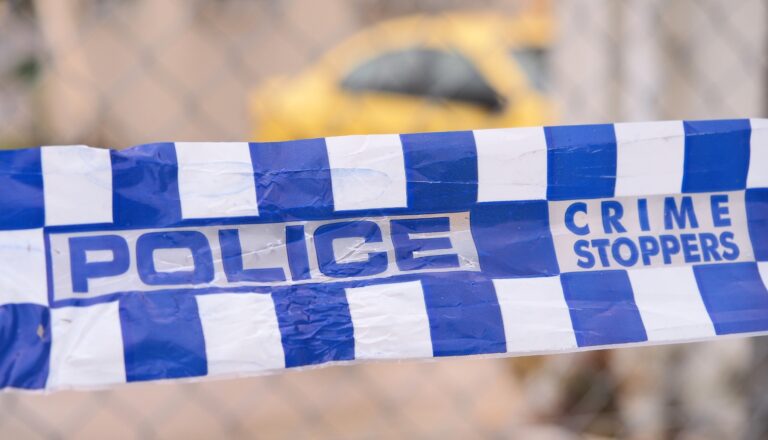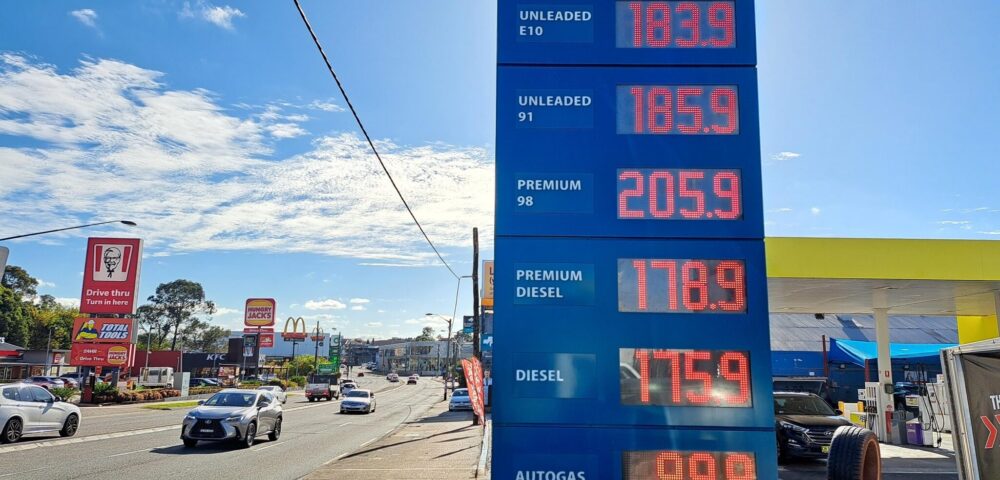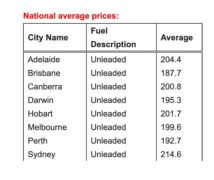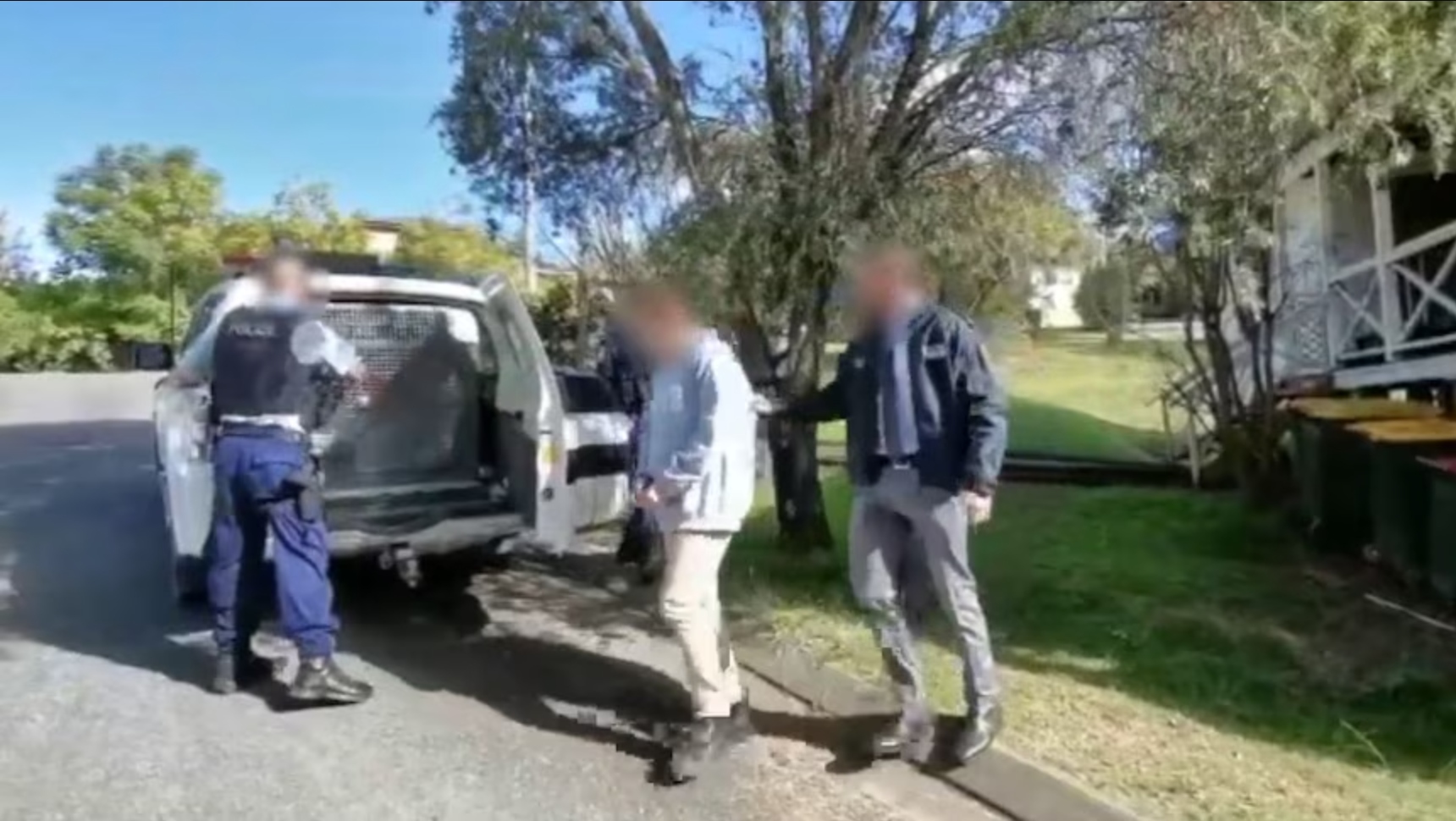
Fuel Costs Surge, Motorists Warned to Fill Up Before Petrol Skyrockets

By CHRISTINE LAI
Petrol prices have hit a 13-month high, with motorists being warned to fill up now in order to avoid the continued escalating costs amidst the ongoing cost-of-living crisis.
The price for unleaded fuel in Sydney today is 213c per litre, according to the NRMA.
Forecasts from the insurer suggest that the average unleaded fuel price in Sydney is set to escalate beyond $2.10 per litre in the upcoming week.
In its weekly fuel report, the NRMA projected that regular unleaded prices would continue to rise over the coming week: “Average regular unleaded prices rose 9.9 cents per litre last week from the bottom of the cycle and should peak around the low 210s cents per litre over the next 5-7 days”.
Premium 95 and Premium 98 unleaded fuels were expected to reach highs of 227 cents per litre and 234 cents per litre respectively.
Sydney’s current average diesel price is 203.2 cents per litre – up a staggering 13.0 cents per litre this past week.
Rising Petrol Prices Exacerbate Transport Unaffordability
The AAA, the peak organisation for Australia’s motoring clubs that has association constituent clubs including NRMA, RACV, RACQ, RAA, RAC, RACT and the AAN created a Transport Affordability Index which analysed the costs of transport in capital cities and across regional households in every state and territory, except the Australian Capital Territory.
According to the data from The AAA Transport Affordability, the average transportation expenses for residents of Sydney amounted to $510.80 per week. This represents an increase of $18.28 compared to the previous quarter in 2022, and it corresponds to approximately 16% of an individual’s income.
Melbourne residents are paying $502.73 (17.5% of income) on transport costs, while those based in Brisbane are paying $500.52 (18.2% of income) on a weekly basis.
The AAA Transport Affordability Index is regularly updated to show how transport costs move over time relative to incomes and the characteristics of the household reflect the most common or average characteristics of the population, including a full range of costs families face when they own a car as well as public transport costs.
One fourth year ACU arts student denounced the increase in fuel costs, asserting that the price hikes were putting an increasing strain on their financial resources.
“I’m unable to go to work by public transport so I have to drive whenever I have a shift, and I’m expected to travel to three different worksites at any given time, so the costs add up,” Jess said.
“I also have to drive to university 2-3 days a week because it’s inaccessible by public transport which means I spend upwards of $70-$80 a week on fuel alone.”
As a casual worker and full-time university student, Jess earns on average $400 a week, thereby spending 17.5% of her income on fuel.
“If I’m already spending this much per week before the price hikes, I don’t know how I’ll be able to afford my day-to-day living expenses once fuel goes past the 210c mark. Fuel costs are like a hidden tax on everyday life. The more I spend on petrol, the less I have for other necessities. It’s a constant trade-off that’s really impacting my overall quality of life”, Jess said.
UTS student Jonathan stated that the fuel increases had begun to make him reduce the time he would drive his car.
“I love driving, but the constant visits to fill up are pushing me towards considering a more fuel-efficient option,” Jonathan said.
“I’m lucky to live close to public transport so I have that as a cost-effective alternative if I need to get to a friend’s house, or to class. Nowadays, my routine often involves opting for a train ride to campus or arranging carpools with friends, where we alternate the responsibility of driving on a weekly basis,” he shared,” explained Jonathan.
NRMA encourage motorists to shop around for fuel prices
NRMA spokesperson Peter Khoury stated that the fuel prices are expected to skyrocket across the country, encouraging motorists to shop around when finding petrol.
“The average price today is $2.13 [a litre], it is obviously way too high and while we see around ⅓ of service stations currently under $2 a litre, we also know that more than half are well over the $2.12 mark and so it’s really important right across Australia that people do their research”, he said.

Khoury outlined factors that caused the spike in prices, which included The Organization of the Petroleum Exporting Countries (OPEC) artificially withholding supply which “is putting upward pressure in prices.”
Additionally, the “concern about the Chinese economy and the impact that it’s having on supply globally, Russia’s war with Ukraine continues to have negative effects on oil prices and consistency of prices,” in conjunction with the weakness of the Australian currency at the moment.
The lack of regulatory oversight at service stations over their pricing structures has led to discrepancies in petrol prices, Khoury explained noting “Service stations can charge what they want.”
“There are no regulations around prices so that’s why you’ll see a huge gap- upwards of $0.50 a litre between the cheapest and the most expensive in any city at any given time,” he continued.
When asked where fuel prices were at in the current cycle, Khoury stated that the wholesale price is just over $1.80.
The NRMA recommended motorists to use fuel checking apps to compare the cheapest fuel prices around their local area. According to the Australian Bureau of Statistics figures (Survey of Motor Vehicle Use, Australia ending 30 June 2020), the average fuel consumption per passenger vehicle was 11.1 litres per 100km.
Fuel Check is an online tool designed to provide consumers with real-time information about fuel prices at every service station across NSW.
The tool provides real-time information about fuel prices at service stations across NSW & ACT and is accessible on any device connected to the internet, including smartphones, tablets, desktop computers and laptops.
Sydney’s cost per litre of fuel is expected to fall slowly over the next 3-4 weeks.









